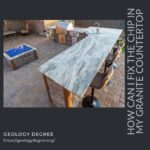Andesite is a gray-black volcanic igneous rock. The word andesite is derived from Andes Mountains in the western part of South America. Andesite rock is found in abundance there. It was the main rock type that erupted during the 1883 Krakatau eruption.

Andesite magma usually erupts from stratovolcanoes. It can also generate strong explosive eruptions to form pyroclastic flows, surges, and huge eruption columns. Its temperature eruption may reach between 900 to 1100°C (1652-2012 °F). The mineral grains are so small that you’ll need a magnifying glass to see them.
Rock Composition
Andesite contains about 52-63 percent silica, crystals composed of plagioclase feldspar, minerals pyroxene (clinopyroxene and orthopyroxene), and low amounts of hornblende. Andesite lava with a low silicone percentage may also contain olivine in trace amounts. Small amounts of mica can also be present as biotite or muscovite. Andesite’s composition is intermediate between basalt and granite.

Andesite Rock Formation
Andesite is usually formed at continental crust above subduction zones. Subduction occurs when an oceanic plate runs into a continental plate and slides beneath it. It produces magma. Diorite rock is also formed similarly.
Where is Andesite Found?
- Andes mountains of South America
- Central America
- Mexico
- Washington
- Oregon
- Aleutian Arc of Indonesia, Japan, and Alaska
- Philippines
- Caribbean
- New Zealand

Andesite Uses
It can be used as an aggregate or fill apart from concrete applications because high silica content can cause an alkali-silica reaction in concrete. Andesite is also a host rock for much of the copper and is used by geologists to study geosutures.
Andesite is also used for making tiles because it is slip-resistant. Some people also use andesite for landscaping and garden designs. Sculptors use it for making monuments and sculptures.







